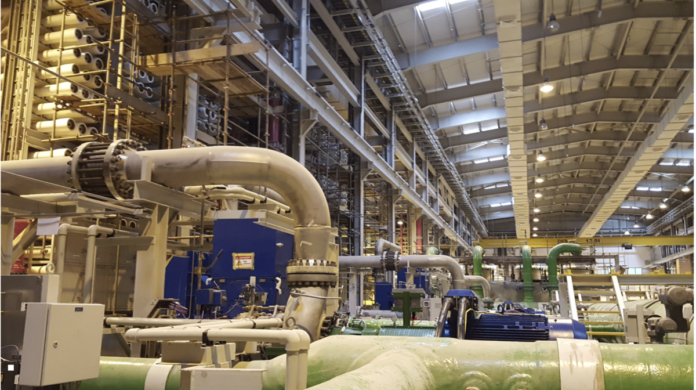The Shuar-4 Independent Water Project (IWP) – built with an investment of around €200mn (approximately US$220mn) – has begun desalination plant operations in Sohar Port.
The eighth largest water treatment company in the world, Spanish water giant Sacyr, which is a lead investor in the Suhar-4 IWP, issued a statement recently confirming that the reverse osmosis (RO) based desalination plant, located within Sohar Port, is operational.
“The plant has 11 reverse-osmosis membrane frames, which allow adjusting production to the needs for potable water. Preventive maintenance that does not involve any stoppage at the plant can be carried out simultaneously,” the release stated.
Sacyr Agua, a Sacyr affiliate, has a 51 per cent stake in the consortium with Oman Brunei Investment Company (25 per cent) and Sogex Oman (24 per cent) also as members. Oman Power and Water Procurement Company (OPWP) is the sole buyer of power and water output, while Sacyr Agua is tasked with designing, construction, ownership, financing, operations and maintenance of the project as part of a 20-year offtake agreement. According to Sacryr, the revenue backlog for this project stands at €1bn over the 20 years of operation established.

The second largest desalination plant with a production capacity of around 250,000 cubic metres (m3) per day, is vital in strengthening Suhar’s position as one of Oman’s biggest seawater desalination hubs that can help cater to increase need for potable water and will provide water to an estimated 220, 000 people, according to the company press statement.
Sacryr also added that the project is well-equipped with technology customised to ensure potable water productions meet the requirements of the Public Authority for Water (PAW), the operator of Oman’s water distribution system.

It also said that the plant has been designed keeping in mind optimisation of energy consumption through Energy Recovery Devices (ERDs), allowing the specific consumption (the amount of energy necessary to produce 1 m3 of potable water) to be less than 3 KWh/m3.






